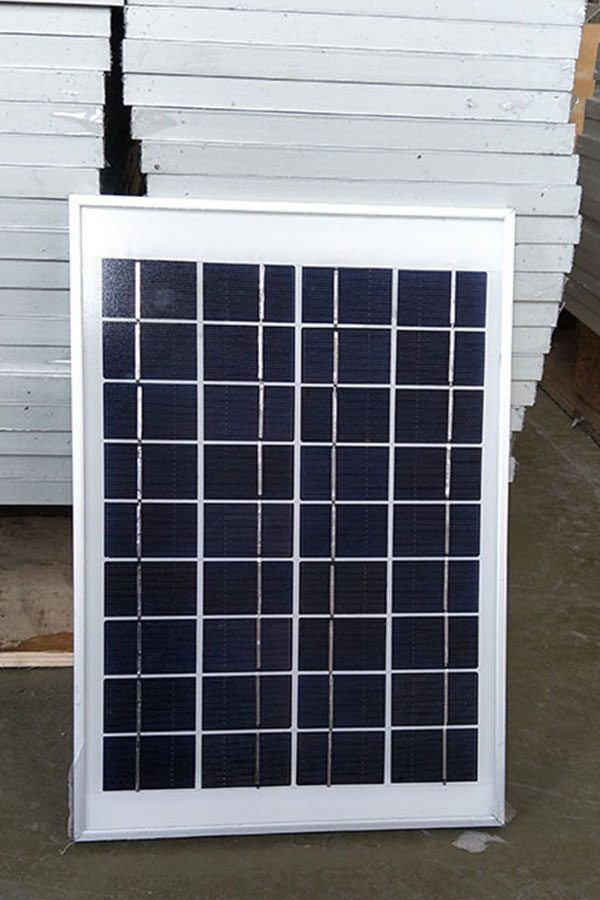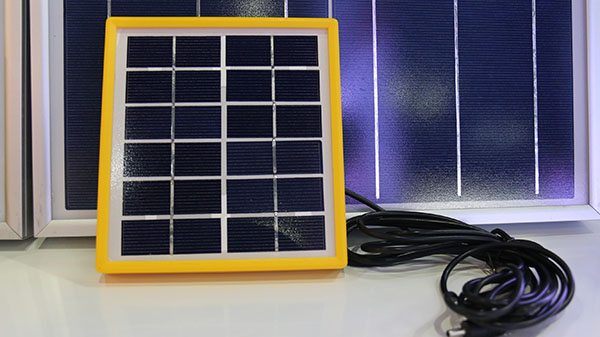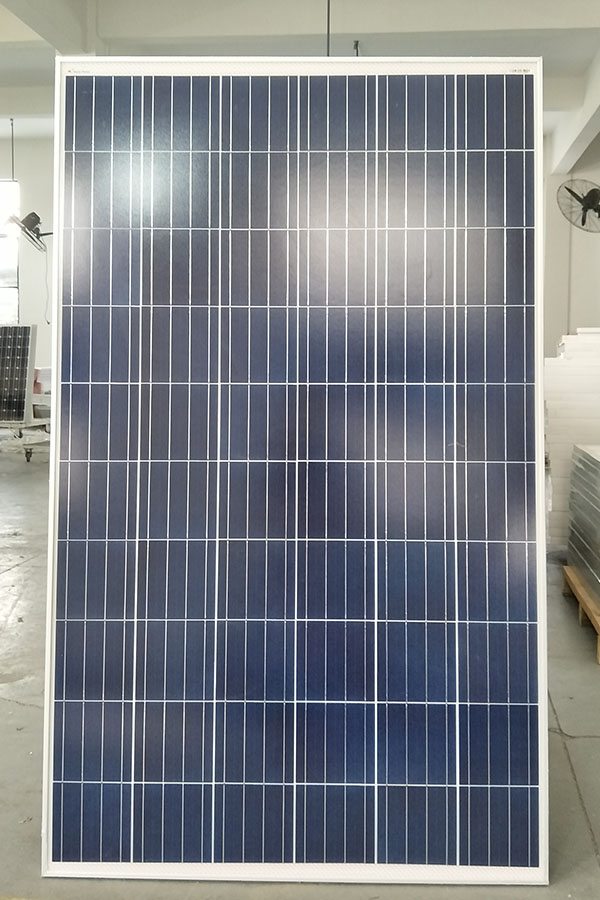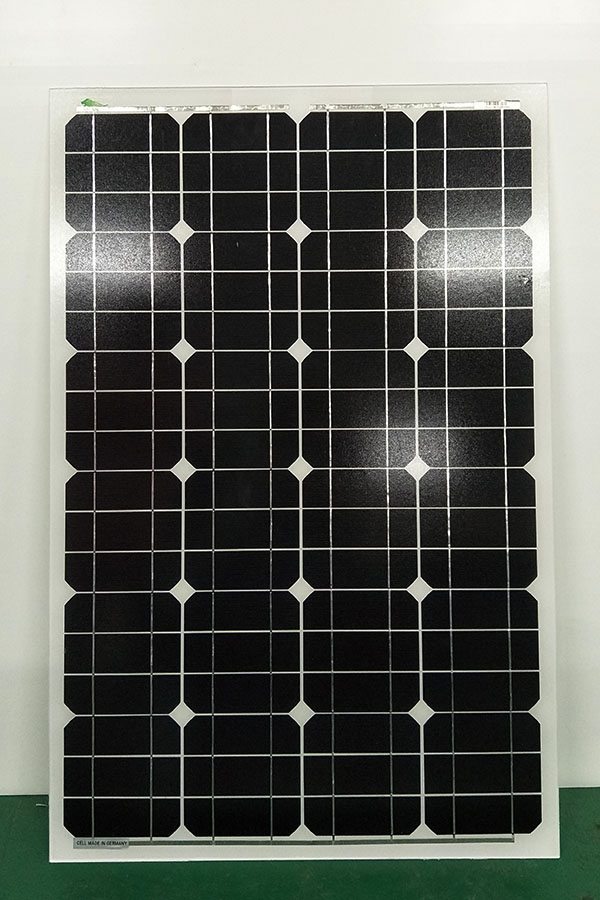Competitive Price for Poly-crystalline Solar Panel 5W Factory for Sao Paulo
Short Description:
With reliable quality process, good reputation and perfect customer service, the series of products produced by our company are exported to many countries and regions for Competitive Price for Poly-crystalline Solar Panel 5W Factory for Sao Paulo, We warmly welcome all perspective inquiries from home and abroad to cooperate with us, and look forward to your correspondence.
Poly-crystalline Solar Panel 5W
Technical parameter
Maximum Power(W) 5W
Optimum Power Voltage(Vmp) 9V
Optimum Operating Current(Imp) 0.56A
Open Circuit Voltage(Voc) 10.8V
Short Circuit Current(Isc) 0.62A
Mechanical Characteristics
Cell Type Polycrystalline
No of Cell 18 (3x6pcs)
Dimensions 175x270x18mm
Weight 0.65KGS
Front Glass 3.2mm,High Transmission, Low Iron,Tempered Glass
Temperature and Coefficients
Operating Temperature(°C): -40°C ~ + 85°C
Maximum System Voltage: 600V(UL)/1000V(IEC) DC
Maximum Rated Current Series: 10A
Temperature Coefficients of Pmax: -0.435%
Temperature Coefficients of Voc: -0.35%
Temperature Coefficients of Isc: 0.043%
Nominal Operationg Cell Temperature (NOCT): 47+/-2°C
Materials of solar panel
1).Solar Cell——Polycrystalline solar cell 156*156mm
2).Front Glass——-3.2mm, high transmission, low iron, tempered glass
3).EVA——-excellent anti-aging EVA
4).TPT——-TPT hot seal made of flame resistance
5).Frame——anodized aluminum profile
6).Junction Box——-IP65 rated, high quality, with diode protection
Superiority: high quality anodized aluminum frame, high efficiency long life, easy installation, strong wind resistance, strong hail resistance.
Features
1. High cell efficiency with quality silicon materials for long term output stability
2. Strictly quality control ensure the stability and reliability, totally 23 QC procedures
3. High transmittance low iron tempered glass with enhanced stiffness and impact resistance
4. Both Poly-crystalline and Mono-crystalline
5. Excellent performance in harsh weather
6. Outstanding electrical performance under high temperature and low irradiance
Quality assurance testing
Thermal cycling test
Thermal shock test
Thermal/Freezing and high humidity cycling test
Electrical isolation test
Hail impact test
Mechanical, wind and twist loading test
Salt mist test
Light and water-exposure test
Moist carbon dioxide/sulphur dioxide
solar panel assembly of the navitron sfb4720
for further info visit www.navitron.org.uk – solar panels are just one of many money and energy saving ways of using renewable energy. navitron also specialises in photovoltaic solar panels (pv), wind turbines, water turbines and ground and air source heat pumps.
2016 End of Year Research Update Seminar 2 of 4:
UNSW School of Photovoltaic and Renewable Energy Engineering
UNSW PV Impact
Martin Green
UNSW SPREE &
Australian Centre for Advanced Photovoltaics (ACAP)
To view complete with slides:
http://www2.pv.unsw.edu.au/videos/Martin-Green-8December2016/
To view additional seminars:
https://www.engineering.unsw.edu.au/energy-engineering/public-research-seminars
Homepage: http://www.pv.unsw.edu.au
Professor Martin Green speaks on the past and current impact of the UNSW PV Group on both research and the production of silicon solar cells.
Projections of the world’s future energy needs have been analysed by Bloomberg and Prof. Green shows how photovoltaic technology is and will be an important tool in meeting these energy needs.
UNSW will be working toward the production and transfer to industry of the PERC technology as well as the development of viable tandem cells.
Brief Bio:
Martin Green is currently a Scientia Professor at the University of New South Wales and Director the Australian Centre for Advanced Photovoltaics (ACAP). He was formerly a Director of CSG Solar, a company formed specifically to commercialise the University’s thin-film, polycrystalline-silicon-on-glass solar cell. His group’s contributions to photovoltaics are well known including the records for the world’s highest efficiency silicon solar cells and the successes of several spin-off companies.
Professor Martin Green has 621 refereed papers in scientific and technical journals and 150 refereed conference papers.
He is the author of six books on solar cells and numerous papers in the area of semiconductors, microelectronics, optoelectronics and solar cells.
Some of Professor Green’s awards and listed below:
1988 Award for Outstanding Achievement in Energy Research
1990 IEEE Cherry Award
1992 CSIRO External Medal
1995 IEEE Ebers Award
1999 Australia Prize (co-winner with Stuart Wenham)
2000 Gold Medal from the Spanish Engineering Academy
2000 Medal of Engineering Excellence for Distinguished Achievement in the Service of Humanity from the World Engineering Federation (Hannover, 2000)
2000 Millennium Award from the World Renewable Congress
2002 Right Livelihood Award
2003 Karl Böer Solar Energy Medal of Merit Award from the University of Delaware
2004 World Technology Award for Energy
2006 Finalist, European Inventor of the Year (together with Stuart Wenham)
2007 SolarWorld Einstein Award
2008 Winner, 2008 Scientist of the Year Award
2009 Zayed Future Energy Prize finalist
2013 Foreign Member of the Royal Society (ForMemRS) of London
2015 James Cook Medal of the Royal Society of New South Wales
2016 Ian Wark Meda of the Australian Academy of Science




